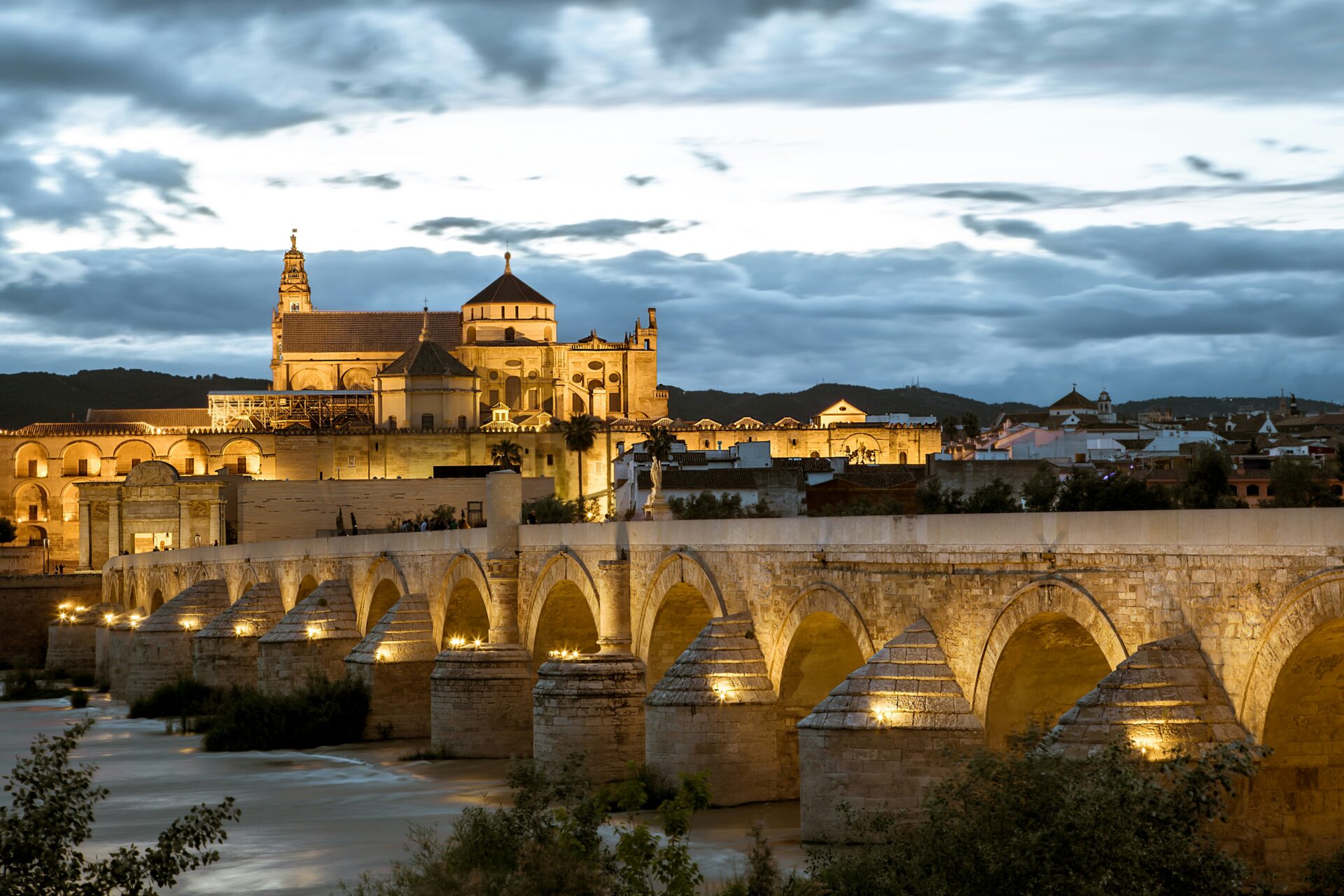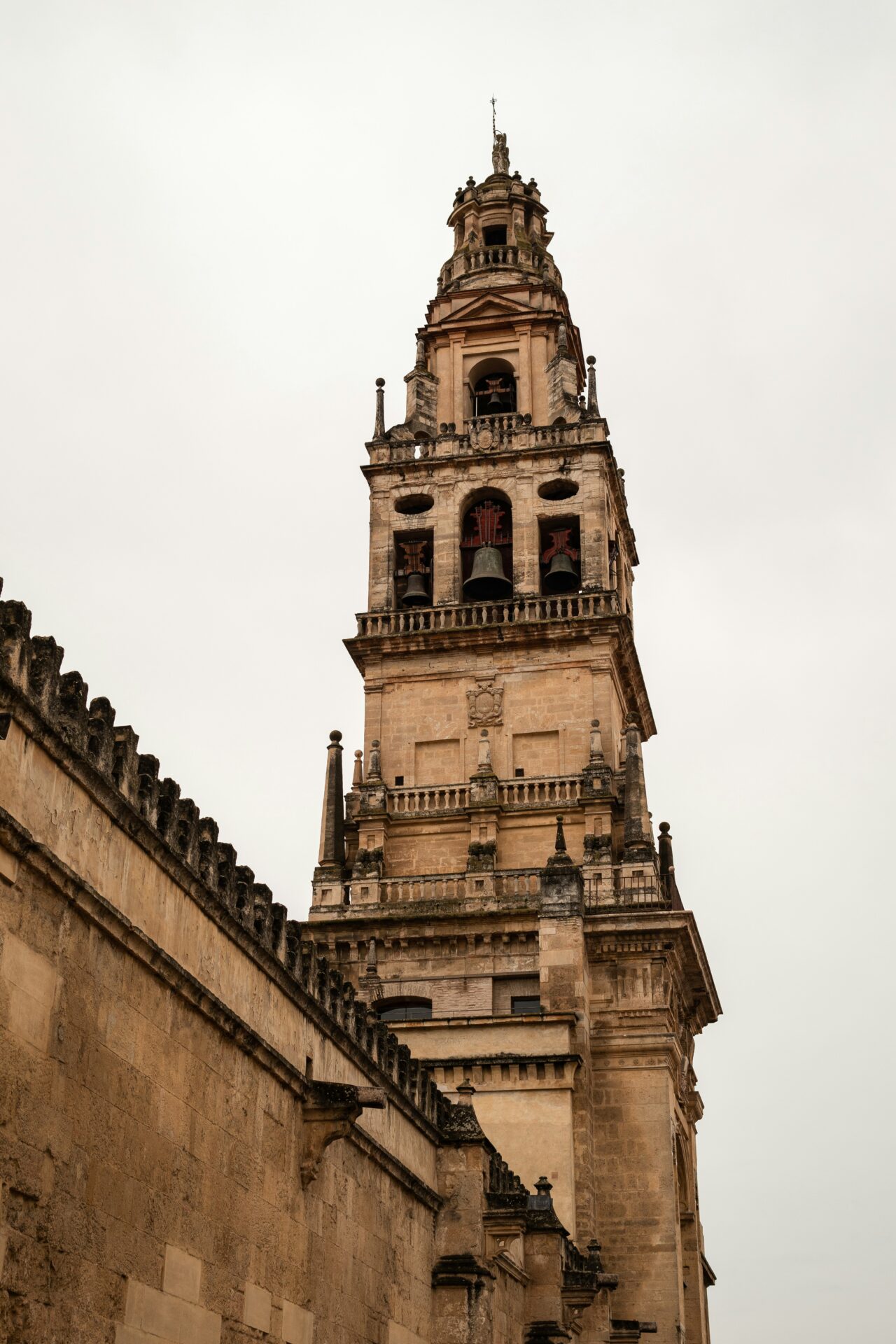Stepping into Córdoba feels like walking through the pages of a history book, where Islamic, Jewish, and Christian cultures blend together in stunning harmony. My recent visit to this ancient Spanish city left me speechless, especially when I first entered the Mezquita-Cathedral. This magnificent structure, with its endless red and white arches and unexpected cathedral rising from the middle of the mosque, perfectly captures the layered history that makes Córdoba so special.
The Mezquita alone is worth the journey to Andalusia, but Córdoba offers so much more.
I found that exploring early in the morning (between 8:30-9:30) provided a rare opportunity to experience these historic sites without crowds.
Wandering through the narrow, flower-lined streets of the Jewish Quarter after visiting the mosque-cathedral, I discovered hidden courtyards and centuries-old traditions still thriving in this modern age.
My time in Córdoba wasn’t just about sightseeing—it was about experiencing a unique cultural fusion that exists nowhere else in the world. From savoring local dishes in tiny family-run tapas bars to watching the sunset over the Roman Bridge, every moment revealed why this UNESCO World Heritage site continues to captivate travelers seeking authentic Spanish experiences beyond the typical tourist destinations.
The Mezquita: A Fusion of Cultures
The Mezquita of Córdoba stands as one of Spain’s most remarkable monuments, where Islamic, Christian, and Jewish influences blend into a stunning architectural masterpiece. This UNESCO World Heritage site tells the story of Spain’s complex religious history through its distinctive arches and artistic elements.
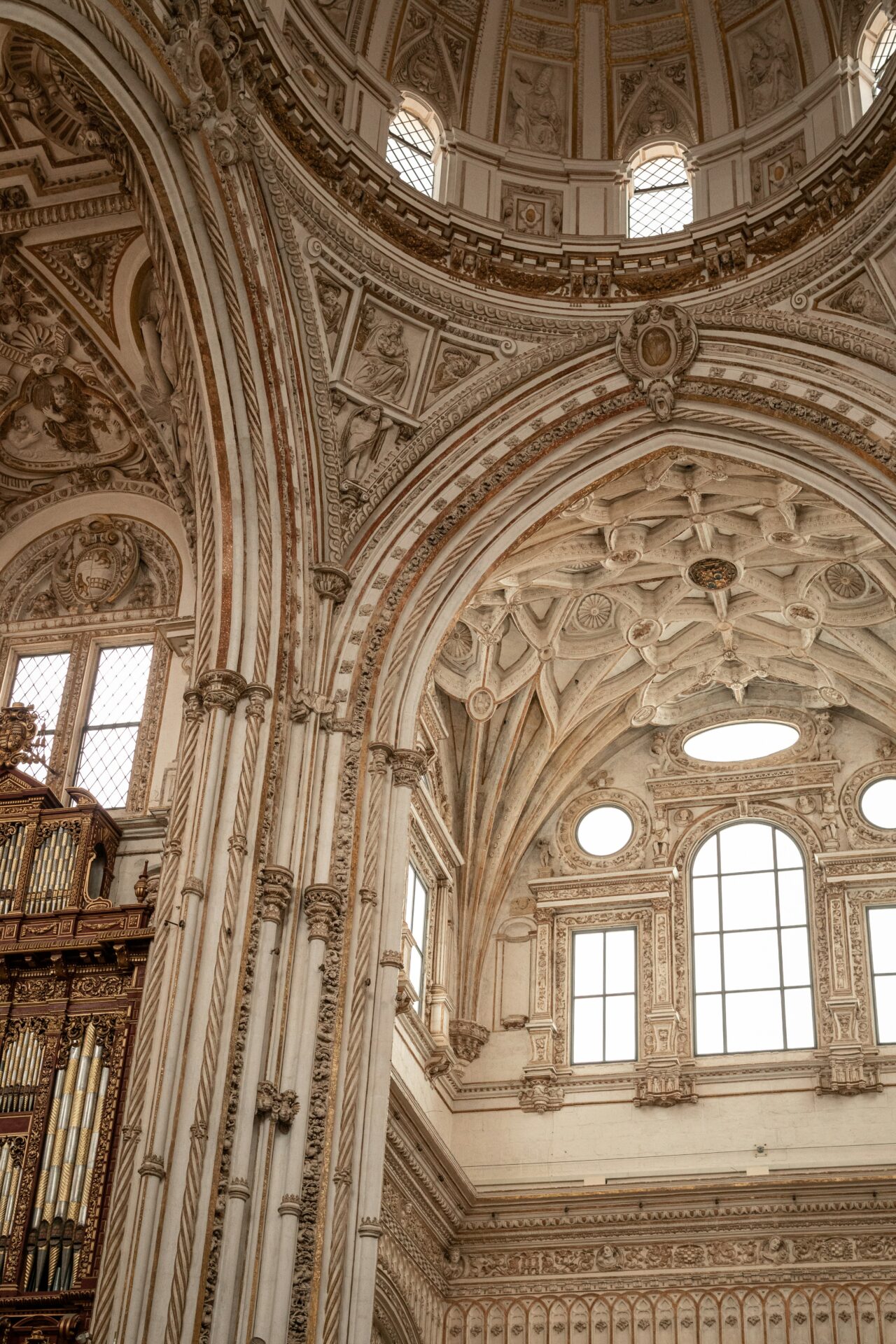
Walking Through Centuries of History
As I stepped into the Mezquita, I immediately felt transported through time. Built in 785 on Visigoth ruins, this structure marked the beginning of seven centuries of Muslim rule in Spain.
The building has layers of history – Roman, Visigoth, Islamic, and Christian elements all coexist within its walls. I was fascinated by how each ruling culture added their mark rather than completely erasing what came before.
Walking through the forest of 856 columns topped with distinctive red and white striped arches, I felt small beneath the vast ceiling. These columns were repurposed from Roman and Visigoth buildings, showing how the Mezquita literally built upon previous civilizations.
The peaceful atmosphere inside surprised me, despite the crowds of visitors whispering in awe at every turn.
Architectural Wonders: From Mosque to Cathedral
The Mezquita’s most striking feature is its successful blend of Islamic and Christian architecture. The original mosque design with its prayer hall and courtyard remains largely intact.
The mihrab, the mosque’s prayer niche, features intricate gold mosaics and beautiful geometric patterns. Standing before it, I marveled at the craftsmanship that has endured for over 1,000 years.
In the 16th century, a stunning Renaissance cathedral was built right in the middle of the mosque. This unusual cathedral-within-a-mosque design creates a fascinating contrast between Islamic and Christian art styles.
Tall Gothic arches soar above the original mosque ceiling, creating a strange but beautiful architectural dialogue. Light streams through stained glass windows, illuminating ornate choir stalls and baroque altars.
The Mezquita-Cathedral perfectly represents Spain’s complex identity – not by erasing history, but by preserving multiple cultural legacies in one magnificent building.
The Charm of Córdoba’s Old Town
Walking through Córdoba’s Old Town feels like stepping back in time. The narrow, winding streets reveal layers of history from Roman, Islamic, Jewish, and Christian influences that shaped this remarkable city.
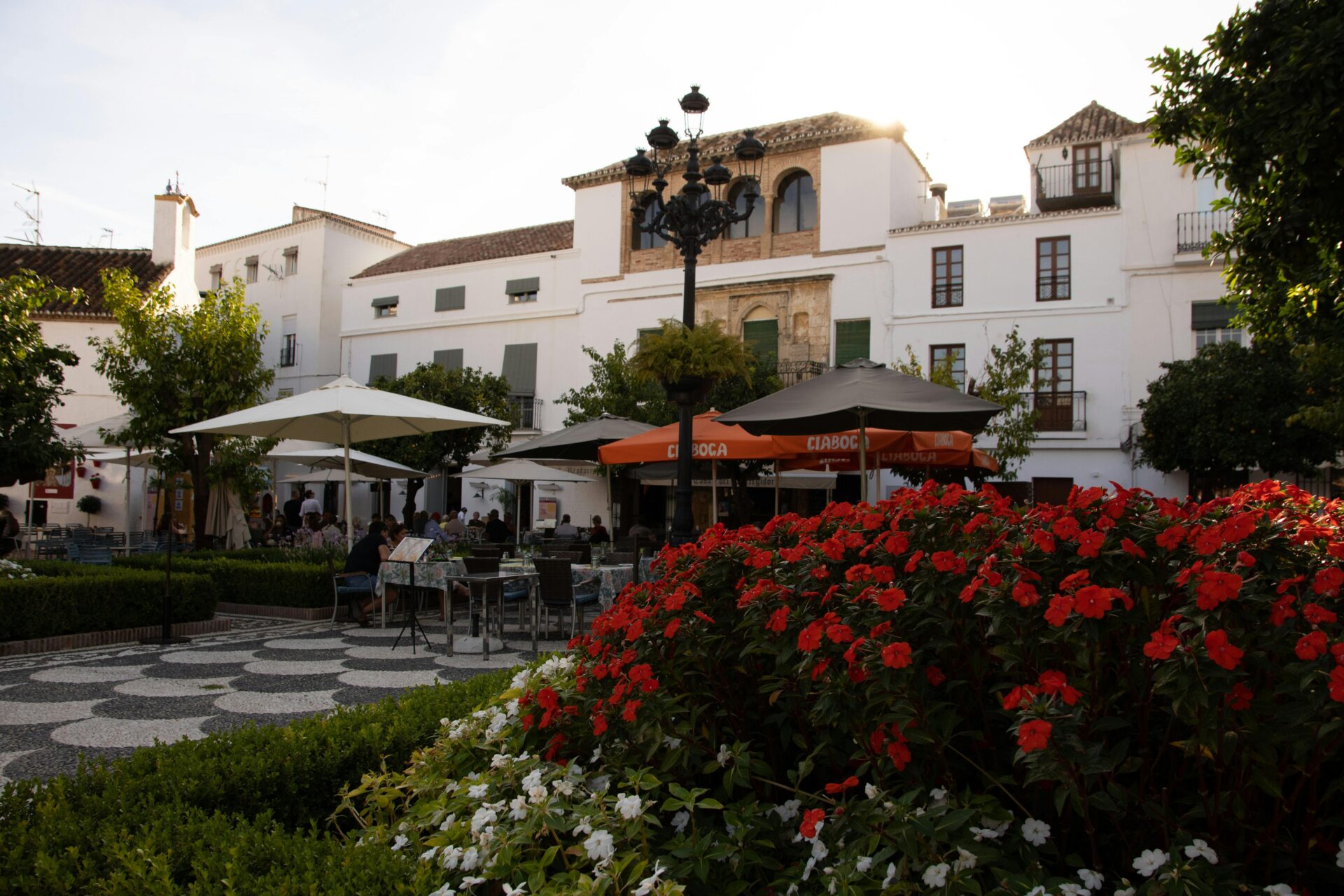
Strolling the Jewish Quarter
The Jewish Quarter (Judería) captured my heart with its maze of narrow whitewashed lanes and intimate plazas. I found myself wandering for hours, discovering hidden corners adorned with potted flowers in every imaginable color.
The atmosphere here is magical, especially in the morning before the crowds arrive.
Don’t miss Calle de las Flores, arguably the most photographed street in Córdoba. I stopped here to capture the perfect shot of the flower-lined street with the Mezquita’s tower peeking above the buildings.
The Synagogue on Calle Judíos offers a rare glimpse into Spain’s Jewish heritage. It’s tiny but beautifully preserved with intricate Mudejar decorations. Nearby, the Souk market brings the area’s Moorish influence to life with local crafts and spices.
The Legacy of the Roman Bridge
The Roman Bridge stretches majestically across the Guadalquivir River, offering some of the best views of Córdoba. Though rebuilt several times since Roman times, it retains its ancient character and connects the Old Town with the southern bank.
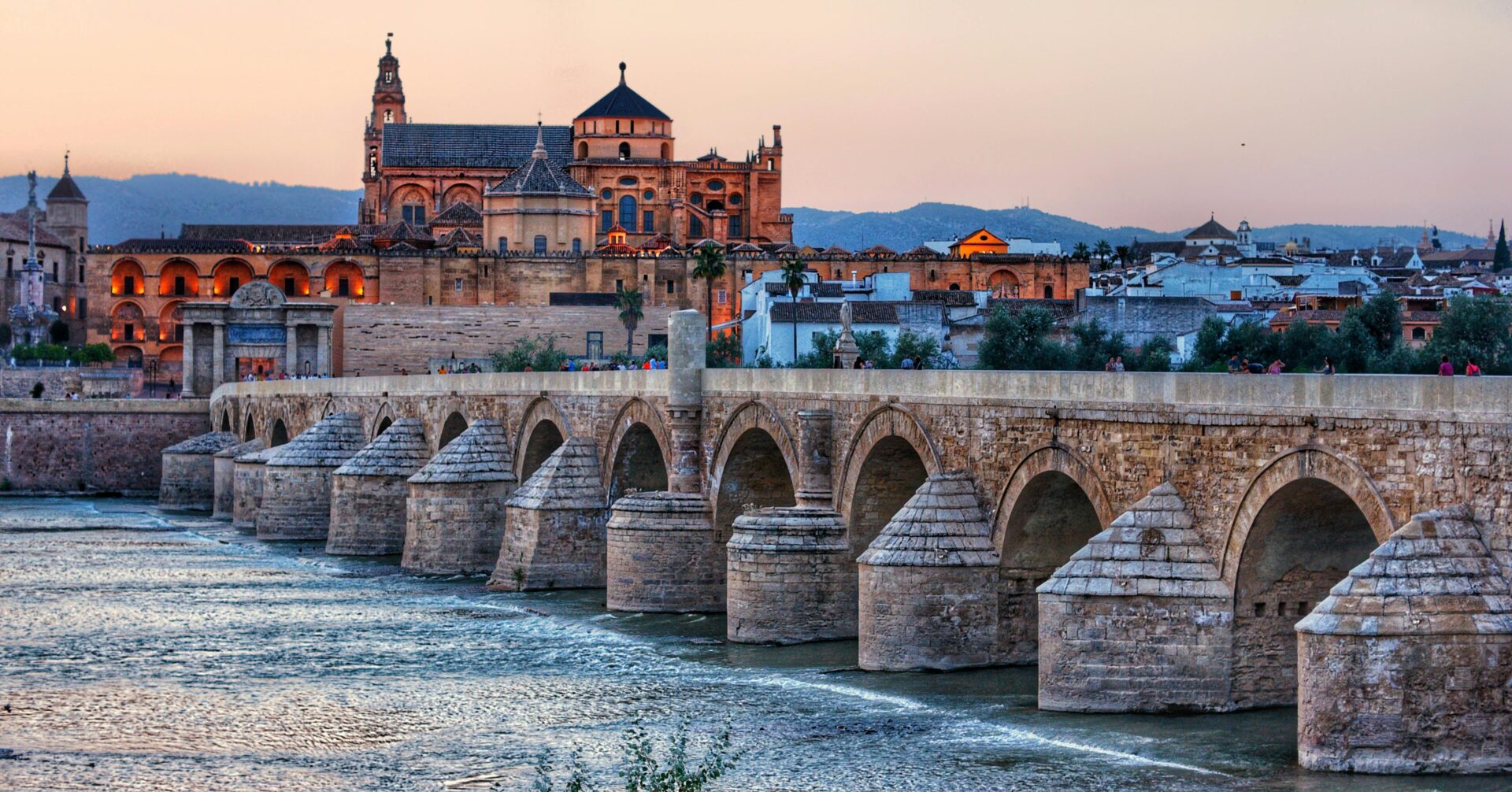
I recommend visiting at sunset when the bridge and the city are bathed in golden light. The reflection of its 16 arches in the water creates a perfect photo opportunity.
At the southern end stands the Tower of Calahorra, now housing a museum dedicated to the three cultures that coexisted in medieval Córdoba. From the bridge, I watched locals fishing along the riverbanks while tourists snapped photos of the stunning panorama.
The bridge featured prominently in Game of Thrones as the Long Bridge of Volantis, adding a fun modern connection to this ancient structure.
Culinary Adventures: Savoring Córdoba’s Flavors
Food in Córdoba tells stories of the region’s rich history through every bite. The city’s culinary scene blends Moorish influences with traditional Spanish cooking techniques, creating unforgettable flavors.
Taste of Tradition: Tapas and Olive Oil
I discovered that tapas culture thrives in Córdoba’s historic center. Small plates of salmorejo (cold tomato soup) and flamenquín (fried pork loin roll) appeared at nearly every table in the traditional taverns I visited.
The star ingredient in most dishes? Olive oil. Córdoba sits in one of Spain’s premier olive-producing regions, and the quality is incredible.
I joined a tasting session where the host, Maria Jesus, explained how to distinguish the different varieties.
“Each drop contains centuries of tradition,” she told me as we sampled oils from local olive groves.
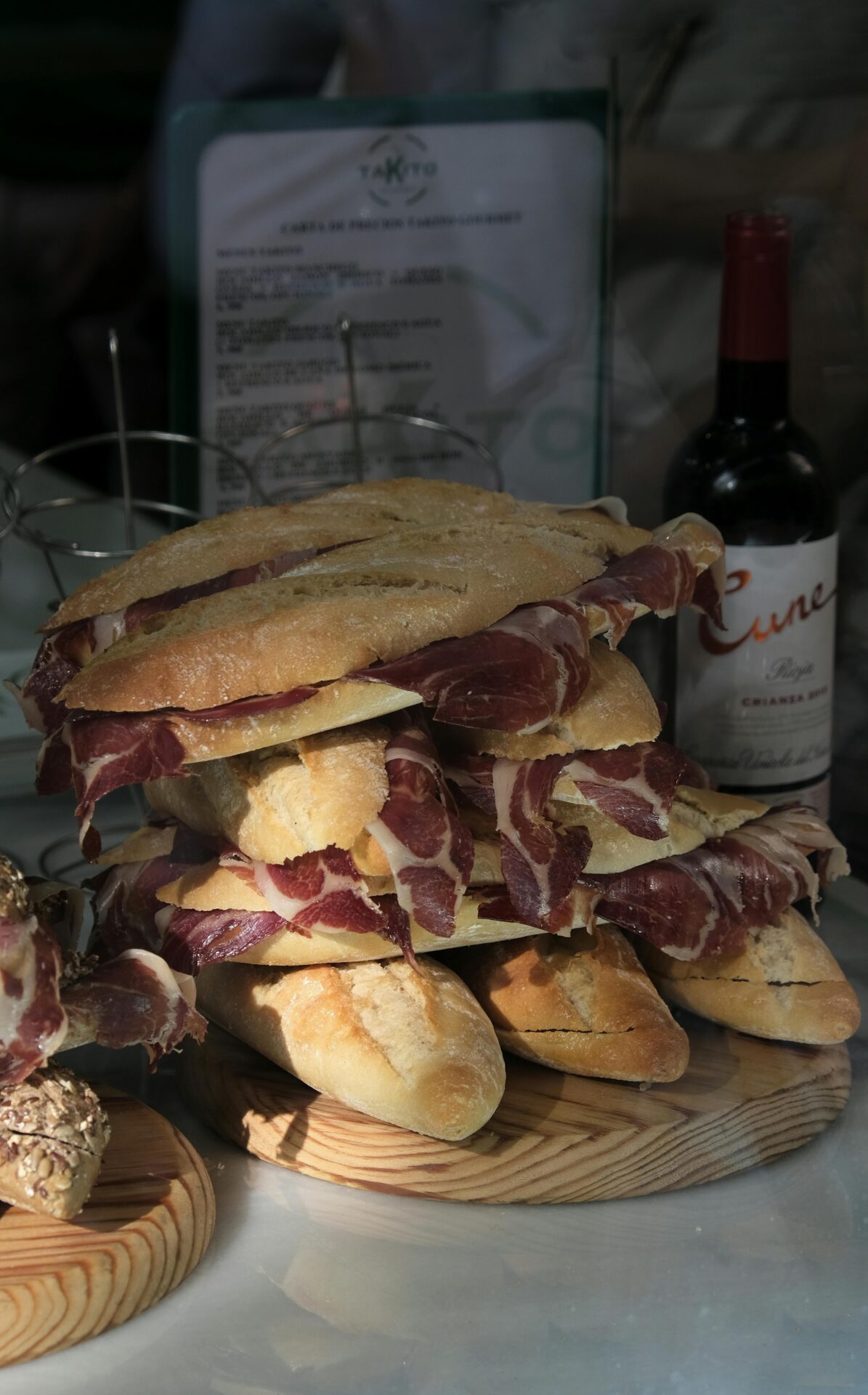
The markets overflow with local products. I watched elderly women haggle over the freshest produce while shopkeepers offered samples of jamón ibérico and local cheeses.
Al Fresco Dining by the River
The banks of the Guadalquivir River provide a stunning backdrop for evening meals. I found several terraces where locals gather to enjoy dinner with views of the Roman Bridge and flowing water.
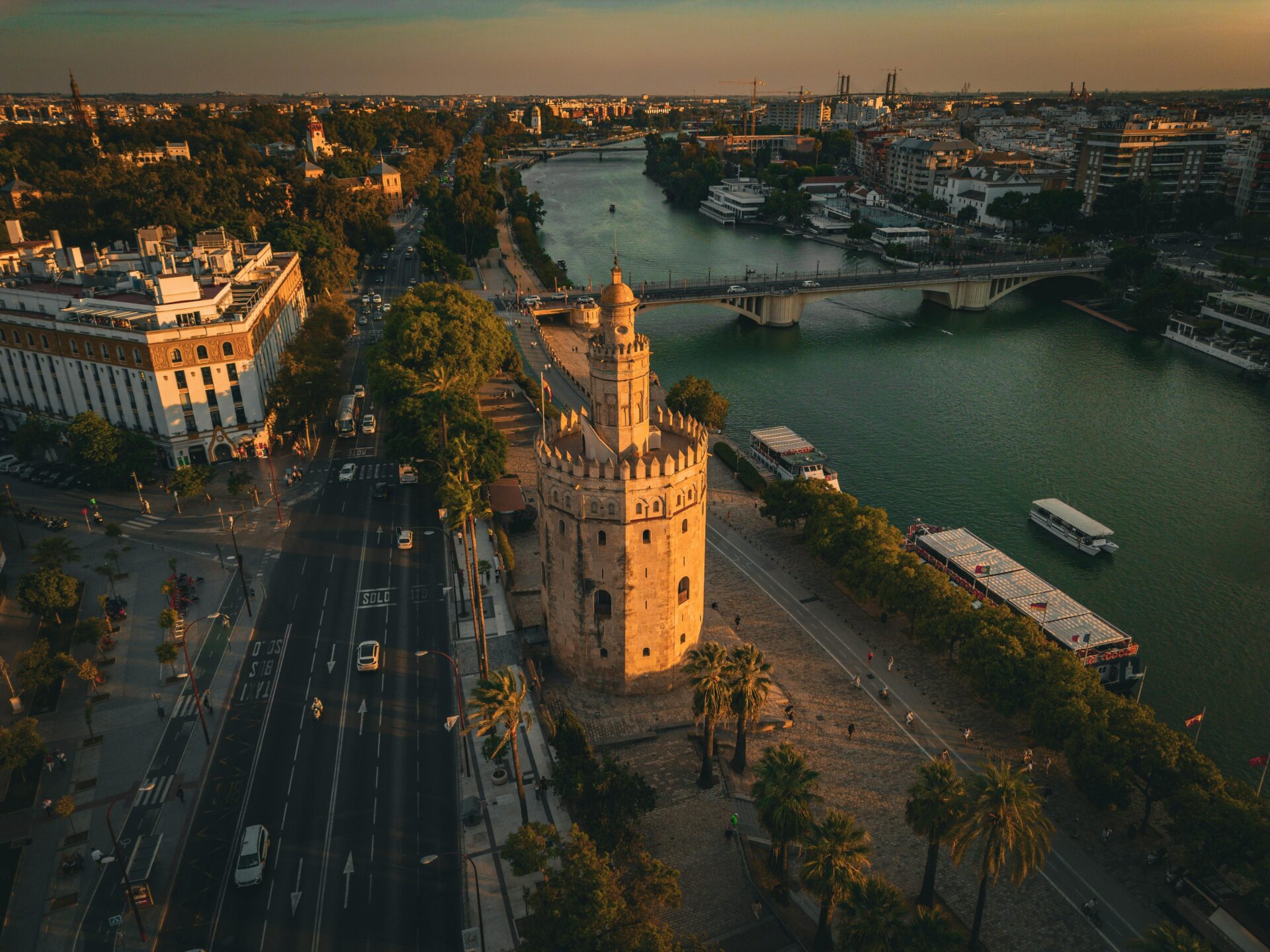
One evening, I dined at a riverside restaurant where the waiter recommended a traditional spread of Andalusian dishes paired with local wine. The combination of cool evening air and regional flavors created a perfect dining experience.
Pepa’s home restaurant, nestled in the historic center, offered both authentic Cordoban cuisine and spectacular city views. Her family recipes have been passed down for generations, making each dish taste like a piece of local history.
Many riverside venues feature live flamenco performances during dinner, adding cultural richness to the meal.
Day Trips from Córdoba
While Córdoba itself offers plenty to explore, the surrounding region of Andalusia beckons with incredible destinations just a train ride away. These nearby gems each offer their own distinct flavors of Spanish culture, architecture, and natural beauty.
Discovering the Grandeur of Granada’s Alhambra
I caught an early high-speed train from Córdoba to Granada, arriving in just under 2 hours. The journey itself was scenic, cutting through olive groves and rolling countryside.
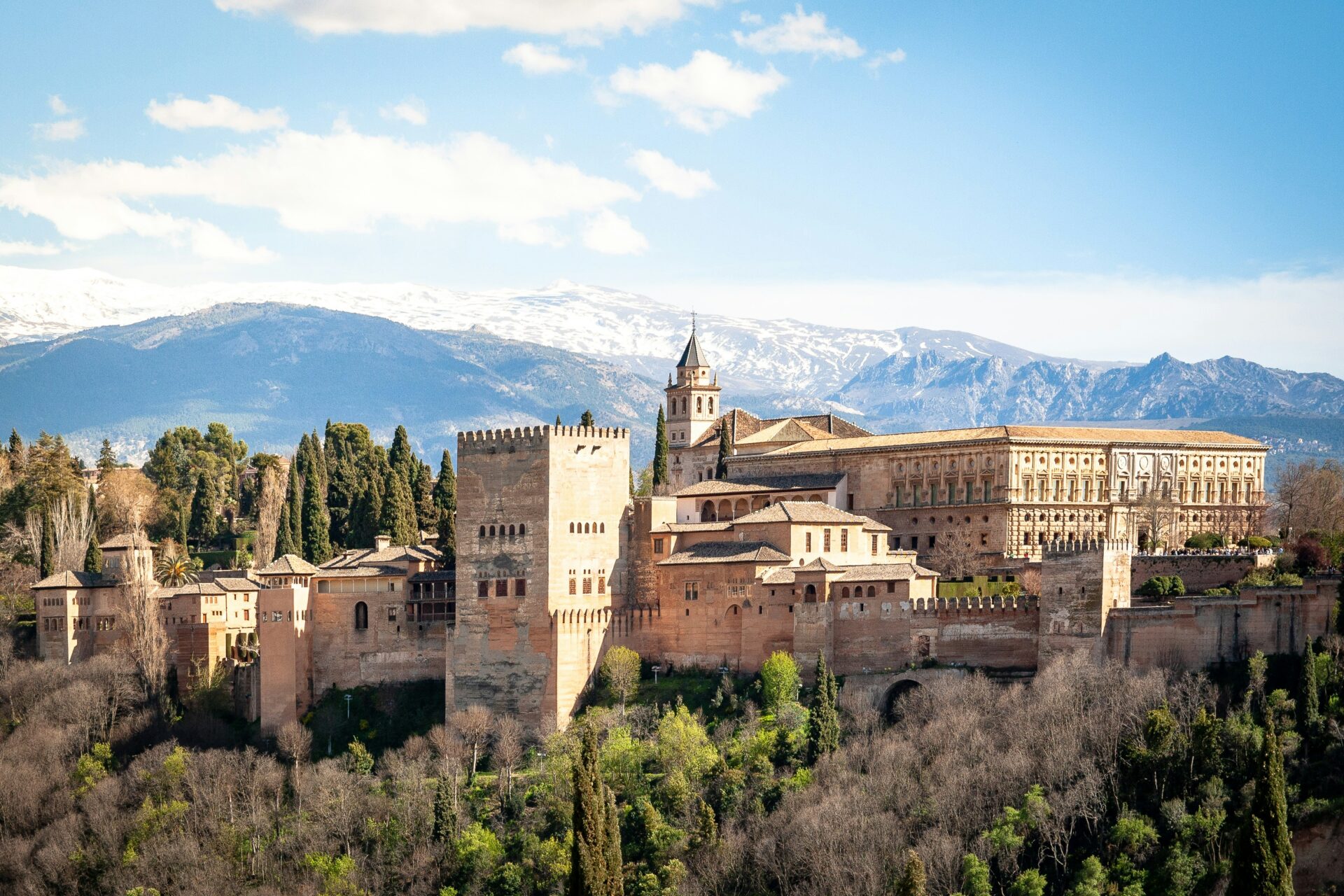
The Alhambra palace complex sits majestically on a hilltop overlooking Granada. I recommend booking tickets well in advance as they sell out quickly, especially during peak season.
The intricate Islamic architecture left me speechless – delicate carvings, peaceful courtyards, and the famous Lion Fountain are truly breathtaking. The Generalife gardens provided a peaceful escape with their flowing water features and meticulously maintained greenery.
After exploring the Alhambra, I wandered through Granada’s Albaicín district with its narrow, winding streets and authentic tapas bars. Many places still offer free tapas with each drink!
The Scenic Sierras of Ronda
Ronda captured my heart with its dramatic setting atop a deep gorge. The journey from Córdoba takes about 2.5 hours with a transfer, but the spectacular views make every minute worthwhile.
The highlight is undoubtedly the Puente Nuevo (New Bridge), an 18th-century stone structure spanning the 328-foot deep El Tajo gorge. I spent nearly an hour just taking photos from different angles.
Ronda’s bullfighting tradition is evident at the Plaza de Toros, Spain’s oldest bullring. Whether you appreciate the controversial sport or not, the architecture and museum provide fascinating historical context.
The white villages scattered throughout the surrounding sierras make for charming side excursions. I particularly enjoyed Setenil de las Bodegas, where homes are built directly into rock overhangs.
Sevilla’s Flamenco Rhythms
Just a 45-minute high-speed train ride from Córdoba, Sevilla makes for the perfect day trip. I arrived early to maximize my time in this vibrant city.
The awe-inspiring Sevilla Cathedral and La Giralda Tower showcase gothic magnificence on an enormous scale. Climbing to the top rewards you with panoramic views of the entire city.
In the afternoon, I wandered through the colorful streets of the Santa Cruz quarter. This former Jewish district now brims with orange-tree-lined plazas and excellent tapas bars.
My evening culminated with an authentic flamenco show. Unlike touristy performances, I found a small, intimate venue where locals gather. The raw emotion of the dancers, the passionate singing, and the hypnotic guitar created an unforgettable experience.
Navigating Córdoba: Tips and Transportation
Getting around Córdoba is quite straightforward, with several convenient options whether you’re arriving from other Spanish cities or exploring the charming streets once you’re there.
Getting to Córdoba: High-Speed Train and Beyond
The high-speed AVE train is my favorite way to reach Córdoba from Madrid – it takes just 1 hour and 45 minutes! I was amazed at how quickly the Spanish countryside flew by my window.
Trains typically run hourly, and I recommend booking tickets in advance through Renfe’s website to secure better prices.
If you’re coming from other parts of the Iberian Peninsula, regional trains and buses connect Córdoba to cities like Seville (45 minutes by AVE) and Málaga (1 hour by train).
The Córdoba train station is quite modern and located about a 20-minute walk from the historic center. Taxis are readily available outside if you have heavy luggage.
Getting Around: Exploring on Foot and Public Transit
Once in Córdoba, I found walking to be the absolute best way to explore. The historic center is compact and mostly pedestrianized.
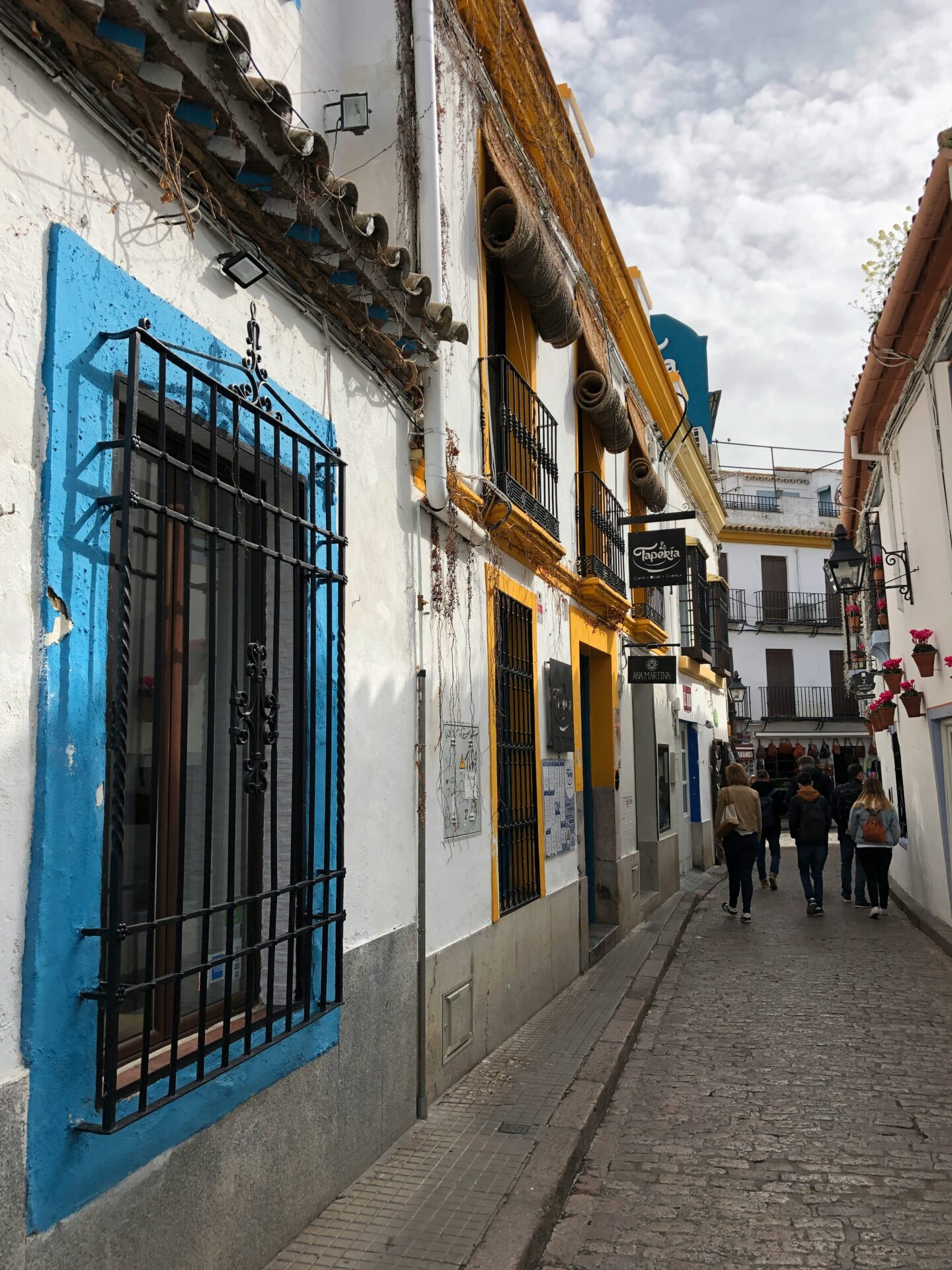
I loved getting lost in the narrow, winding streets of the Jewish Quarter!
For longer distances, these options worked well for me:
- City buses: Reliable and affordable (€1.30 per trip)
- Taxis: Readily available and reasonably priced
- Bike rentals: Several shops offer daily rentals (€10-15)
I recommend wearing comfortable shoes as the streets are often cobbled.
Many attractions are concentrated in the old town, making it easy to see several sites in one day.
The tourist information center near the Mezquita provides excellent free maps that helped me find my way around the maze-like streets.

